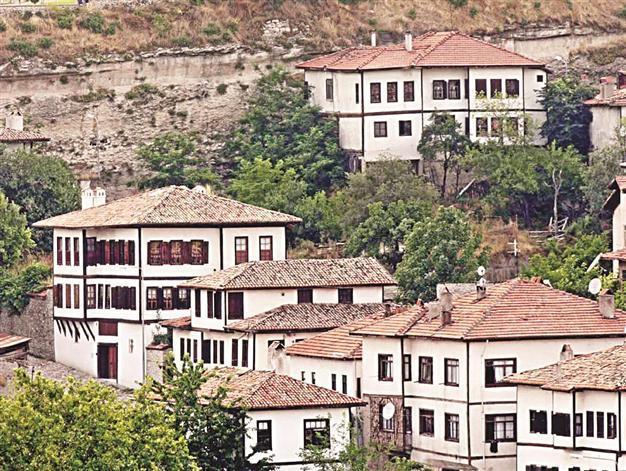Water to spring forth again from fountains
KARABÜK - Anatolia News Agency

There are a total of 150 fountains in Karabük, but only 20 of them will be restored with the support of the city’s locals. The fountains have been built by Sultan Selim III’s grand vizier, İzzet Mehmet Paşa, at the end of the 18th century. Hürriyet photo
Long a draw for both domestic and foreign tourists interested in the architecture of Ottoman houses, the northwestern province of Karabük’s Safranbolu district is now looking to draw even more visitors with the restoration of the area’s historical fountains.
A total of 20 fountains will be restored according to their original design, officials have said, adding that water will also flow from the devices.
Water has long been a defining characteristic of Safranbolu, with small pools and fountains in residential gardens adorning much of the Ottoman-era district.

AA photo
There are a total of 150 fountains in the town, but only 20 of them will be restored. The fountains were built by Sultan Selim III’s grand vizier, İzzet Mehmet Paşa, at the end of the 18th century. Fountains in İncekaya village, which is 7.5 kilometers away from Safranbolu, and others have already been restored with the support of locals and state officials.
Speaking to Anatolia news agency, Karabük Gov. İzzettin Küçük said the restoration would be supported by the Culture and Tourism Ministry, the Historical Cities Association (TKB) and the Association to Preserve and Promote the Environment and Cultural Artifacts (ÇEKÜL), the Karabük Governor’s Office and Safranbolu Municipality.
Noting that the restoration projects had been prepared by professionals, Küçük said: “The fountains had many meanings and symbols in the Ottoman Empire era. They meant ‘generosity,’ ‘popularity’ and ‘attractiveness.’”
Noting that 50 fountains around the area had already been restored, the governor said there were still 80 awaiting restoration. “Twenty of them will be restored with this new project,” he added.
Ultimately, the project is designed to sustain the culture surrounding water, which was very important during the Ottoman era, he said.
Watchtowers of the citySafranbolu has also been attracting tourists with a display of miniature versions of unique Anatolian watchtowers.
The watchtowers were made in 1901 to celebrate Ottoman Sultan Abdülhamid II’s silver jubilee, for which the sultan ordered the construction of miniature watchtowers throughout Anatolia in his owner. Currently, the miniature versions of these watchtowers are being exhibited at an open-air lot spread over a 1,000-square-meter area that opened three months ago near the Safranbolu Watchtower, which was built by İzzet Mehmet Paşa in 1797 and is one of the oldest in Anatolia.
Every miniature watchtower has a different story that has been included by museum officials next to the towers, each of which was built to celebrate a glorious event.
The district’s old town preserves many old buildings and has 1,008 registered historical artifacts. The old town is situated in a deep ravine in a fairly dry area in the rain shadow of the mountains.

